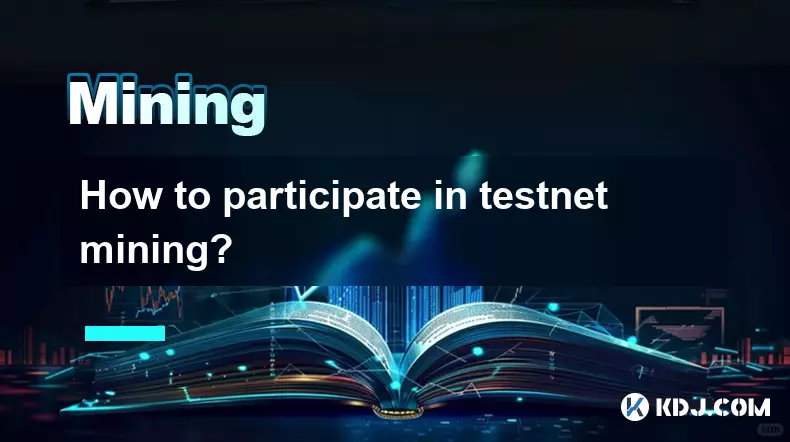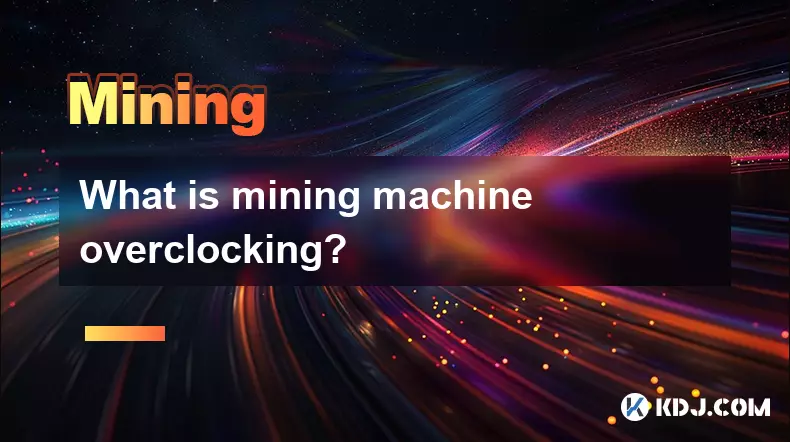-
 bitcoin
bitcoin $109667.069529 USD
-3.03% -
 ethereum
ethereum $3936.685804 USD
-4.07% -
 tether
tether $1.000493 USD
0.01% -
 xrp
xrp $2.771823 USD
-4.74% -
 bnb
bnb $957.805027 USD
-5.34% -
 solana
solana $196.735100 USD
-6.68% -
 usd-coin
usd-coin $0.999727 USD
-0.01% -
 dogecoin
dogecoin $0.227355 USD
-5.12% -
 tron
tron $0.335205 USD
-0.81% -
 cardano
cardano $0.779256 USD
-3.59% -
 ethena-usde
ethena-usde $0.999900 USD
-0.06% -
 hyperliquid
hyperliquid $42.492095 USD
-6.61% -
 chainlink
chainlink $20.501853 USD
-4.34% -
 avalanche
avalanche $28.952606 USD
-11.21% -
 stellar
stellar $0.356038 USD
-3.93%
What are the profit models of mining?
Cryptocurrency miners earn through block rewards, transaction fees, merged mining, cloud contracts, and pool fees, with profitability hinging on low electricity costs, efficient hardware, and diversified income streams like hosting and tokenized assets.
Sep 20, 2025 at 11:37 pm

Revenue Streams from Cryptocurrency Mining
1. Block rewards are one of the primary sources of income for miners. When a miner successfully solves a cryptographic puzzle and adds a new block to the blockchain, they receive newly minted coins as compensation. This process is central to how networks like Bitcoin maintain decentralization and incentivize participation.
2. Transaction fees form another critical component of mining revenue. Users attach fees to their transactions to prioritize processing speed. Miners select transactions with higher fees during periods of network congestion, increasing their earnings per block. As block rewards diminish over time due to halving events, transaction fees become increasingly significant.
3. Some mining operations participate in merged mining, where they simultaneously mine multiple cryptocurrencies using the same computational power. This model works when secondary blockchains share compatibility with the primary chain’s hashing algorithm, allowing miners to maximize output without additional hardware costs.
4. Cloud mining contracts allow individuals to lease hash power from large-scale data centers. Operators profit by charging maintenance fees and taking a percentage of generated returns. While controversial due to fraud risks, legitimate cloud mining services generate steady income through service premiums and economies of scale.
5. Mining pools distribute rewards among participants based on contributed computational effort. Pool operators deduct a small fee—usually 1% to 3%—from each member’s payout. This consistent deduction creates a stable income stream for pool managers regardless of individual block discoveries.
Cost Management and Operational Efficiency
1. Electricity represents the largest ongoing expense in mining operations. Profitability heavily depends on securing low-cost energy, often achieved by locating facilities near hydroelectric plants or regions with subsidized power rates. Energy efficiency directly impacts net margins.
2. Hardware depreciation must be factored into long-term planning. ASICs and GPUs degrade over time and eventually become obsolete due to advancements in technology. Operators who reinvest profits into newer, more efficient machines maintain competitive advantage.
3. Cooling and infrastructure maintenance contribute significantly to overhead. Facilities in colder climates reduce reliance on artificial cooling systems, lowering operational costs. Modular data center designs also help scale operations incrementally while controlling capital expenditure.
4. Remote monitoring tools minimize labor expenses by enabling centralized oversight of geographically dispersed rigs. Automation reduces human intervention, decreasing error rates and improving uptime across large fleets of mining equipment.
5. Strategic timing of equipment purchases can yield substantial savings. Buying hardware during market downturns or after major sell-offs allows operators to acquire resources below peak prices, enhancing return on investment when conditions improve.
Monetization Through Ancillary Services
1. Hosting services for third-party miners offer an alternative revenue path. Operators with excess capacity rent out space, power, and internet connectivity, charging monthly fees. This model diversifies income beyond direct mining rewards.
2. Data center operators sometimes repurpose waste heat from mining rigs for district heating or greenhouse agriculture. These innovative applications transform a byproduct into tangible value, attracting sustainability-focused partnerships and subsidies.
3. Firmware optimization and custom BIOS development for mining hardware have emerged as niche markets. Experienced technicians sell enhanced configurations that boost performance or reduce power consumption, creating digital products with high margins.
4. Training programs and consulting services cater to newcomers entering the space. Seasoned miners monetize expertise by offering setup guidance, risk assessment, and profitability forecasting, particularly valuable in volatile market phases.
5. Tokenized mining assets enable fractional ownership models, where investors buy shares in physical rigs via blockchain-based tokens. Operators earn management fees and may issue governance tokens to align incentives, blending traditional mining with decentralized finance mechanisms.Frequently Asked Questions
Q: How do halving events affect mining profitability?A: Halving events cut block rewards in half at predetermined intervals, reducing immediate income from new coin issuance. Miners must rely more on transaction fees and operational efficiency to sustain profits, often leading to consolidation within the industry as smaller players exit.
Q: Can GPU mining still be profitable today?A: GPU mining remains viable for certain altcoins with algorithms resistant to ASIC dominance. Profitability hinges on selecting coins with favorable difficulty-to-reward ratios and managing electricity costs carefully. Ethereum's transition to proof-of-stake has reduced demand, but other networks continue supporting GPU-mined tokens.
Q: What role do mining pools play in stabilizing income?A: Mining pools aggregate computational power from multiple participants, increasing the frequency of block discoveries. By distributing rewards proportionally, they provide steadier payouts compared to solo mining, which involves higher variance and longer wait times between successes.
Q: How do miners hedge against cryptocurrency price volatility?A: Many miners use futures contracts or over-the-counter agreements to lock in sale prices for future production. Others adopt a hybrid strategy, selling a portion of mined coins immediately while holding reserves in anticipation of price appreciation, balancing cash flow needs with market exposure.
Disclaimer:info@kdj.com
The information provided is not trading advice. kdj.com does not assume any responsibility for any investments made based on the information provided in this article. Cryptocurrencies are highly volatile and it is highly recommended that you invest with caution after thorough research!
If you believe that the content used on this website infringes your copyright, please contact us immediately (info@kdj.com) and we will delete it promptly.
- Hashdex, Crypto ETFs, XRP & Solana: A New Era for Digital Asset Investing
- 2025-09-26 18:25:12
- Crypto Market Slowdown? Year-End Rally Still in Play!
- 2025-09-26 18:25:12
- XRP, RLUSD, and the Derivatives Market: A New York Minute on Crypto's Next Big Thing
- 2025-09-26 18:45:15
- Bitcoin Price Under Pressure: Is $105,000 Still in Play?
- 2025-09-26 19:05:14
- Pepeto's Presale Surge: Riding the PEPE Success Wave?
- 2025-09-26 19:05:14
- Pepeto vs. Shiba Inu vs. PEPE: The Next Meme Coin Millionaire Maker?
- 2025-09-26 19:10:01
Related knowledge

The difference between staking and mining
Sep 24,2025 at 05:18am
Understanding Staking in the Cryptocurrency Ecosystem1. Staking involves holding funds in a cryptocurrency wallet to support the operations of a block...

How to participate in testnet mining?
Sep 22,2025 at 09:18am
Understanding Testnet Mining in the Crypto Ecosystem1. Testnet mining is a method used by blockchain developers to simulate real-world conditions on a...

How to dispose of abandoned mining machines?
Sep 19,2025 at 08:19pm
Assessing the Condition of Abandoned Mining Rigs1. Begin by inspecting each mining machine for visible damage, corrosion, or missing components. Machi...

How to identify high-quality mining pools?
Sep 21,2025 at 03:19pm
Reputation and Track Record1. A mining pool’s reputation is built over time through consistent performance and transparency. Pools that have operated ...

Advantages of decentralized mining pools
Sep 20,2025 at 04:36pm
Enhanced Security and Resistance to Censorship1. Decentralized mining pools operate on blockchain-based smart contracts, eliminating the need for a ce...

What is mining machine overclocking?
Sep 21,2025 at 07:19pm
Understanding Mining Machine Overclocking1. Mining machine overclocking refers to the process of increasing the operating frequency of a cryptocurrenc...

The difference between staking and mining
Sep 24,2025 at 05:18am
Understanding Staking in the Cryptocurrency Ecosystem1. Staking involves holding funds in a cryptocurrency wallet to support the operations of a block...

How to participate in testnet mining?
Sep 22,2025 at 09:18am
Understanding Testnet Mining in the Crypto Ecosystem1. Testnet mining is a method used by blockchain developers to simulate real-world conditions on a...

How to dispose of abandoned mining machines?
Sep 19,2025 at 08:19pm
Assessing the Condition of Abandoned Mining Rigs1. Begin by inspecting each mining machine for visible damage, corrosion, or missing components. Machi...

How to identify high-quality mining pools?
Sep 21,2025 at 03:19pm
Reputation and Track Record1. A mining pool’s reputation is built over time through consistent performance and transparency. Pools that have operated ...

Advantages of decentralized mining pools
Sep 20,2025 at 04:36pm
Enhanced Security and Resistance to Censorship1. Decentralized mining pools operate on blockchain-based smart contracts, eliminating the need for a ce...

What is mining machine overclocking?
Sep 21,2025 at 07:19pm
Understanding Mining Machine Overclocking1. Mining machine overclocking refers to the process of increasing the operating frequency of a cryptocurrenc...
See all articles










































































